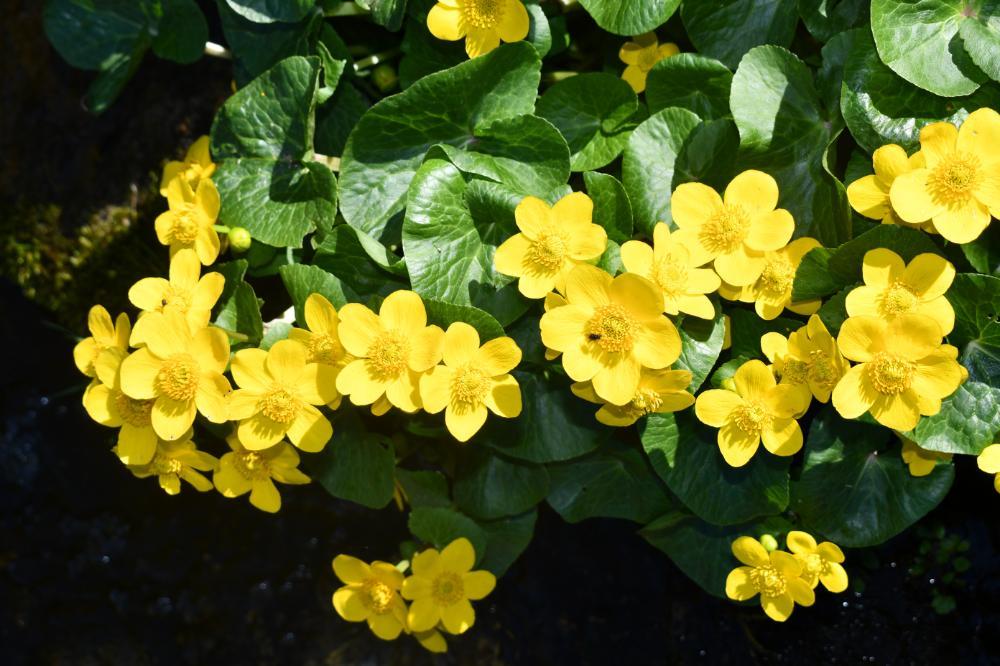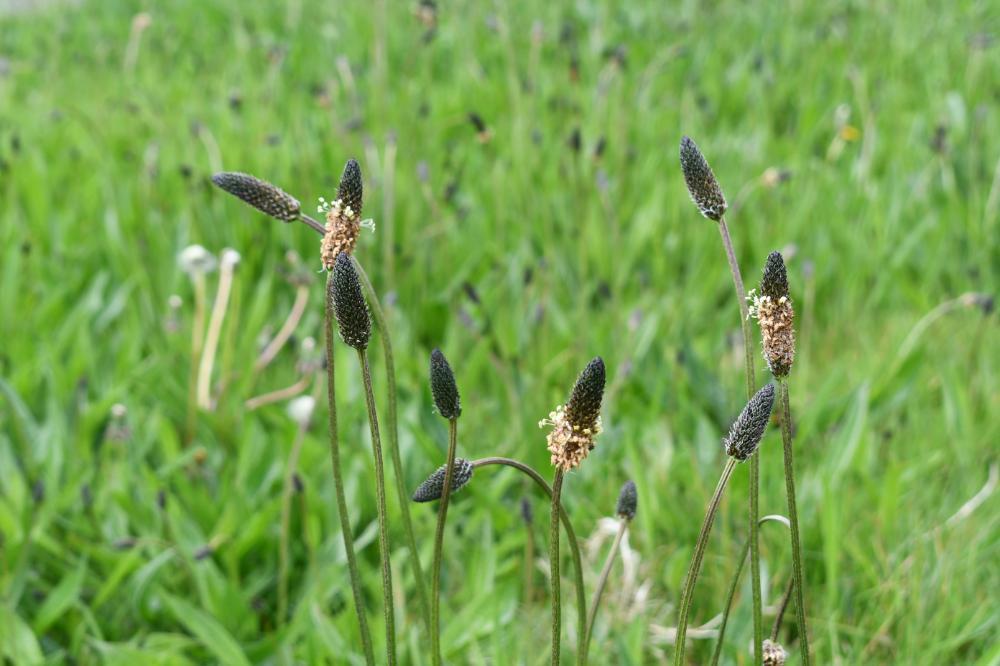27 May 2023
Growing Wild – Marsh marigold and Ribwort plantain

Now is the time to look out for Marsh marigold & Ribwort plantain, according to Catherine Keena, Teagasc Countryside Management Specialist, who takes a closer look at some of our native Irish biodiversity.
Marsh marigold
Look out for marsh marigold with striking glossy yellow flowers in loose clusters and distinctive, heart-shaped shiny fleshy leaves. Resembling a giant flowered buttercup, they grow in marshes and on riversides. The stout hollow stems have minute air spaces that allow gaseous exchange through parts of the plant above and below the waterlogged level. It was used in folk medicine to treat warts, cleaning wounds, anaemia and epilepsy. It was known as May-flower and its name as Gaeilge is lus buí bealtaine meaning the yellow May plant. On May eve, it was hung in bunches over doors to protect from evil. Marsh marigold is part of our native Irish biodiversity.

Ribwort plantain
Look out for ribwort plantain, noticeable now with lacy ruffs of trembling cream coloured anthers on long thread like filaments protruding from dark brown bullet shaped flower heads on tall stalks. Pollen within the anthers is carried away on the wind. It is also known as narrow leaved plantain because of its long thin leaves with obvious parallel veins in a low growing rosette. It grows in grassland, tracks and gateways, where it can withstand trampling. Called slánlus as Gaeilge meaning health plant, it was used in herbal medicine to treat bleeding, inflammation and worm control in animals. Ribwort plantain is part of our native Irish biodiversity

See previous Growing Wild articles below:
- Growing Wild – Dandelions and cowslips
- Growing Wild – Lesser Celandine and Ivy berries
- Growing Wild – Winter Heliotrope and frogspawn
- Growing Wild – Willow Catkins and Birds Nests
- Growing Wild – Harts Tongue and Hazel
- Growing Wild – Whins and Ferns
- Growing Wild – Rose Hips and Flowering Ivy
- Growing Wild – Yarrow and Herb Robert
- Growing Wild – Elderberries and Blackberries
- Growing Wild – Haws and Spindle
- Growing wild – Guelder Rose and Sloes
- Growing wild – Purple loosestrife and Lord and Ladies
- Growing Wild – willowherb and water mint
- Growing Wild – dandelion and greater stitchwort
- Growing Wild – willow, primrose and lady’s smock
- Growing Wild – whitethorn and cow parsley
- Growing Wild – bluebells and guelder rose
- Growing wild – Honeysuckle and Foxglove
- Growing Wild – Elder and Ragged Robin
- Growing wild – dog rose and meadowsweet
- Growing wild – Privet and Lady’s Bedstraw
- Growing Wild – Bird’s foot trefoil and Knapweed
Keep an eye on Teagasc Daily for Growing Wild updates. Learn more from Teagasc about Biodiversity and Countryside here.
